Key takeaways
- Artsonia empowers students by providing a platform to share their artwork, enhancing their confidence and sense of community.
- The integration of activist teacher resources encourages meaningful discussions about justice and equity in the classroom.
- Communication with parents through Artsonia strengthens home-school connections, fostering support for students’ artistic journeys.
- Linking student artwork to social issues broadens their engagement, turning the virtual gallery into a space for activism and real-world impact.
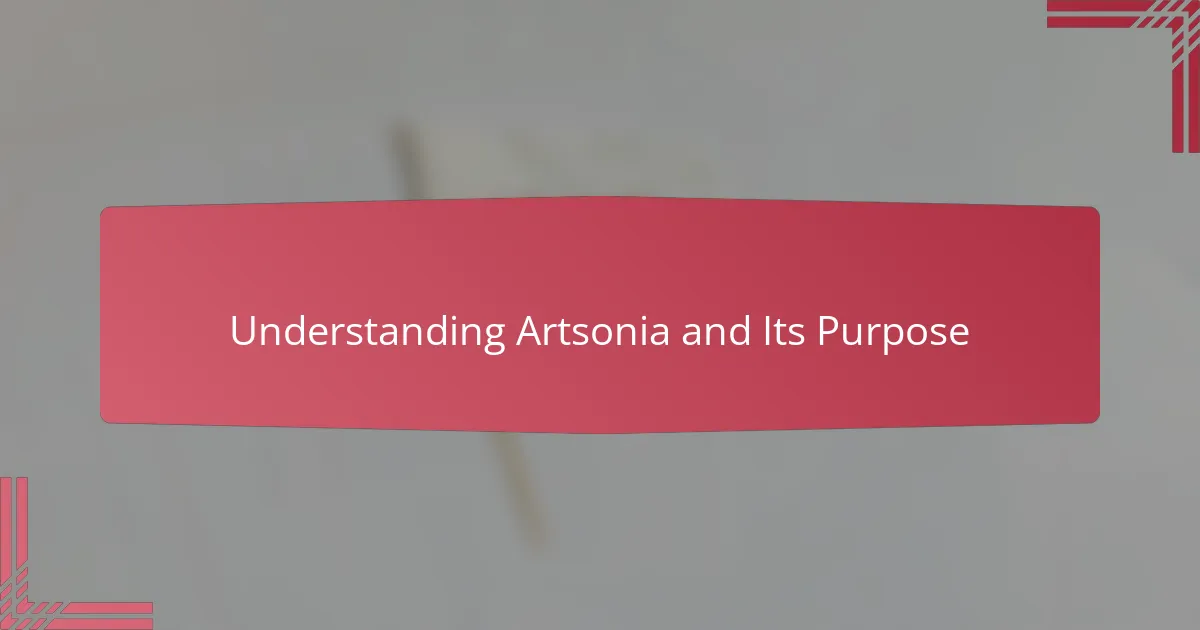
Understanding Artsonia and Its Purpose
Artsonia is an online platform designed to showcase student artwork in a safe and supportive virtual gallery. When I first explored it, I realized it wasn’t just a digital portfolio—it was a space where students could feel proud and recognized beyond the classroom walls. Have you ever seen a student’s face light up after sharing their work with family and friends online? That moment of validation is exactly what Artsonia fosters.
What struck me most about Artsonia is how it empowers students to take ownership of their creations while connecting their art to a larger community. The platform’s purpose goes beyond displaying images; it encourages reflection on artistic growth over time. From my experience, this encouraged students to value their creative process, not just the final product.
I also appreciate how Artsonia supports teachers by organizing artworks in a way that’s accessible and easy to share with parents without compromising privacy. This practical function reminded me how technology, when thoughtfully integrated, can bridge gaps between school and home. Isn’t that the kind of connection every educator hopes to achieve?
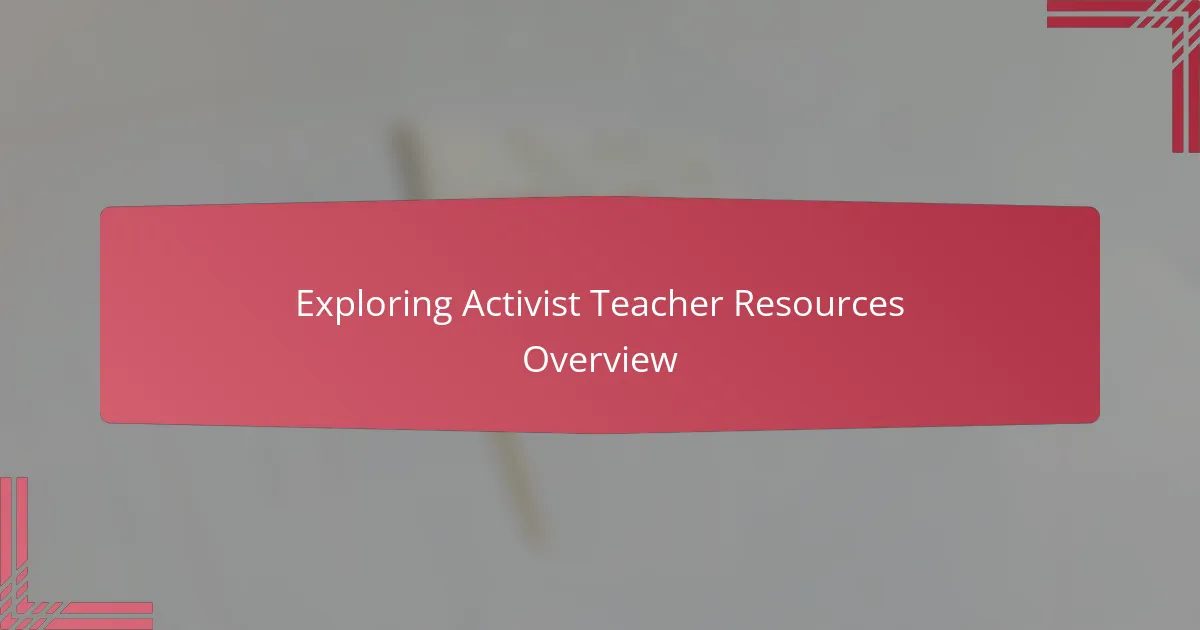
Exploring Activist Teacher Resources Overview
Diving into activist teacher resources revealed to me a rich landscape of tools aimed at empowering educators to foster inclusion and social awareness in their classrooms. I found it inspiring how these resources encourage us to move beyond traditional teaching, engaging students in meaningful dialogues about justice and equity. Have you ever felt that spark when a student suddenly connects a lesson to real-world activism? That’s the impact these resources can have.
What really stands out about activist teacher resources is their adaptability—they can be woven into any subject or project, making lessons more relevant and impactful. From my experience, incorporating these materials not only enriches the curriculum but also nurtures critical thinking and empathy. It’s like planting seeds for thoughtful citizens, one class at a time.
I also noticed that many resources offer practical strategies and community-building ideas that make the daunting task of discussing activism approachable for both teachers and students. Isn’t it encouraging to find support that helps transform challenging conversations into learning opportunities? This combination of guidance and inspiration is exactly what every committed teacher needs.

Benefits of Using Artsonia in Art Classes
One of the biggest benefits I found with Artsonia is how it boosts student confidence. When children see their artwork displayed online for family and friends to admire, their sense of pride and accomplishment really shines through. Have you noticed how a little recognition can ignite a lifelong passion for creativity?
Another thing I appreciate is how Artsonia fosters communication between school and home. Sharing students’ progress digitally means parents stay connected to what’s happening in art class without needing to wait for a parent-teacher conference. From my experience, this ongoing dialogue strengthens relationships and encourages support for each child’s artistic journey.
Lastly, Artsonia helps me track artistic growth over time in a way that feels meaningful to students. Instead of focusing solely on grades or critiques, they start to see how their skills evolve and develop. Doesn’t that make art feel more like a personal story rather than just a classroom assignment? I’ve seen this shift change the way students approach creativity for the better.
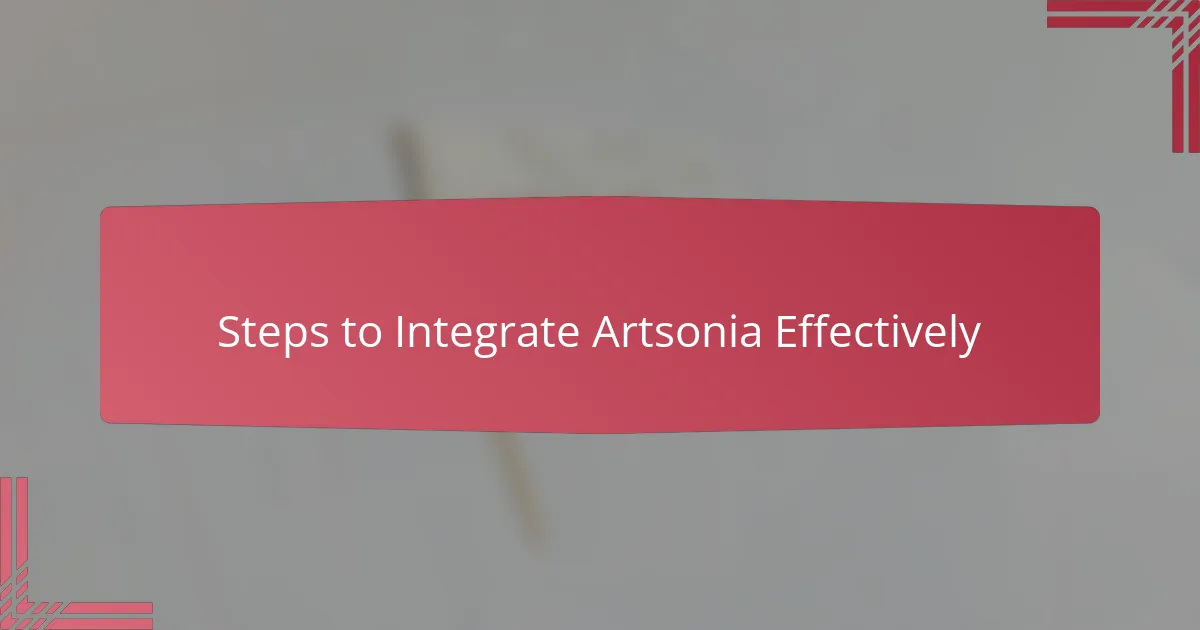
Steps to Integrate Artsonia Effectively
The first step I took was setting up a clear system for uploading and organizing student artwork. At first, it felt a bit overwhelming, but breaking it down into manageable weekly goals made the process smoother. Have you ever felt that sense of relief when technology finally starts working for you instead of against you? That’s exactly what happened once I established a routine.
Next, I made it a point to involve students in naming and describing their artworks before uploading them. This simple act gave them a stronger voice in how their creations were represented and sparked meaningful conversations about their intentions. From my experience, letting students reflect on their work adds depth to the process and makes the digital gallery more than just images—it becomes a collection of stories.
Finally, I prioritized communicating with parents about how Artsonia works and why it matters. I found that a quick newsletter or demo during parent nights helped them feel included and excited. When families see their child’s art shining online and understand the platform’s purpose, it creates a powerful partnership between home and school. Isn’t that a connection worth nurturing?
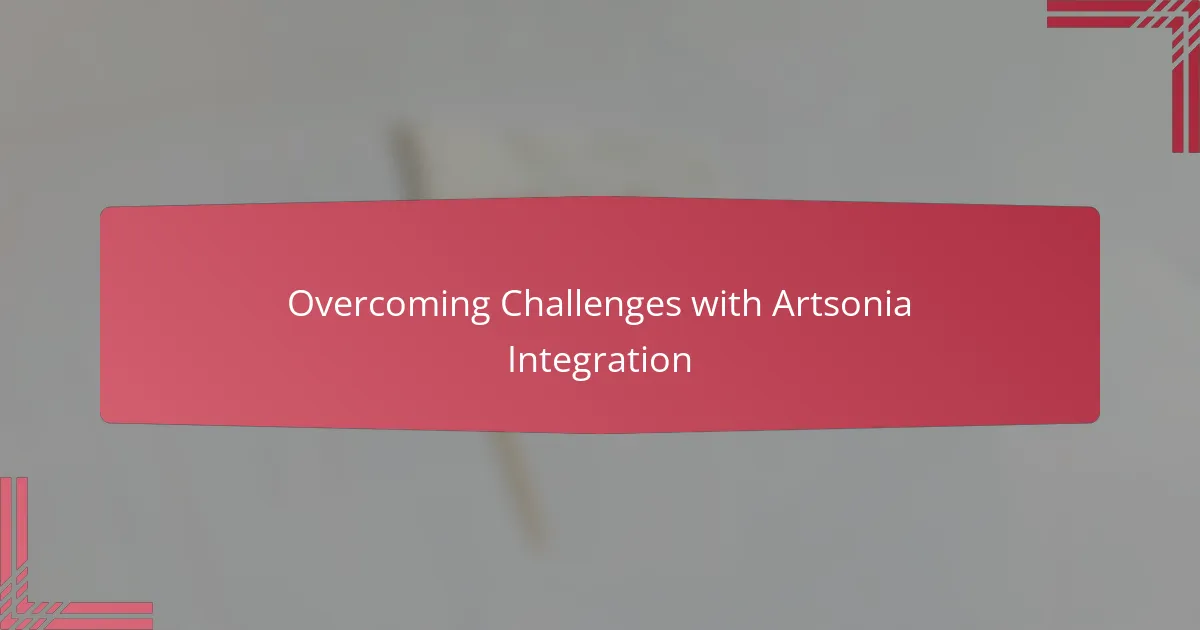
Overcoming Challenges with Artsonia Integration
Integrating Artsonia wasn’t without its bumps. I remember struggling at first with managing the time it took to upload each student’s work while keeping up with lesson plans. It felt overwhelming, but breaking the task into small, consistent steps helped me gain control—and slowly, it became part of my routine. Have you ever found that things seem complicated until you just start tackling them piece by piece?
I also faced challenges getting all students and families comfortable with using the platform, especially those less familiar with technology. To bridge this gap, I made sure to offer hands-on demonstrations and simple guides that really made a difference. From my experience, patience and clear communication go a long way when easing people into something new.
Another obstacle was ensuring student privacy while sharing their art publicly. At first, I worried about keeping personal information safe. But Artsonia’s privacy settings gave me the confidence to protect my students, and I explained these measures to families, which helped build trust. Isn’t it reassuring when a tool supports both visibility and security in equal measure?

Personal Insights on Using Artsonia
Using Artsonia has reshaped the way I experience teaching art. I vividly recall moments when a shy student’s face lit up after seeing their masterpiece featured online—it felt like witnessing a quiet triumph. Have you ever noticed how a little digital spotlight can bring out genuine pride and motivation in young artists?
I also found that Artsonia invites deeper reflection from students. One particular child started narrating the story behind their artwork each time we added to their online gallery, turning it into a personal journey rather than just another assignment. Doesn’t that shift make the creative process far more meaningful for both teacher and student?
At times, managing the platform felt like learning a new language. But as I grew more comfortable, Artsonia became more than a tool; it turned into a bridge connecting classrooms, families, and communities. From my experience, the real beauty lies not just in displaying art, but in nurturing relationships that empower young voices to be seen and heard.
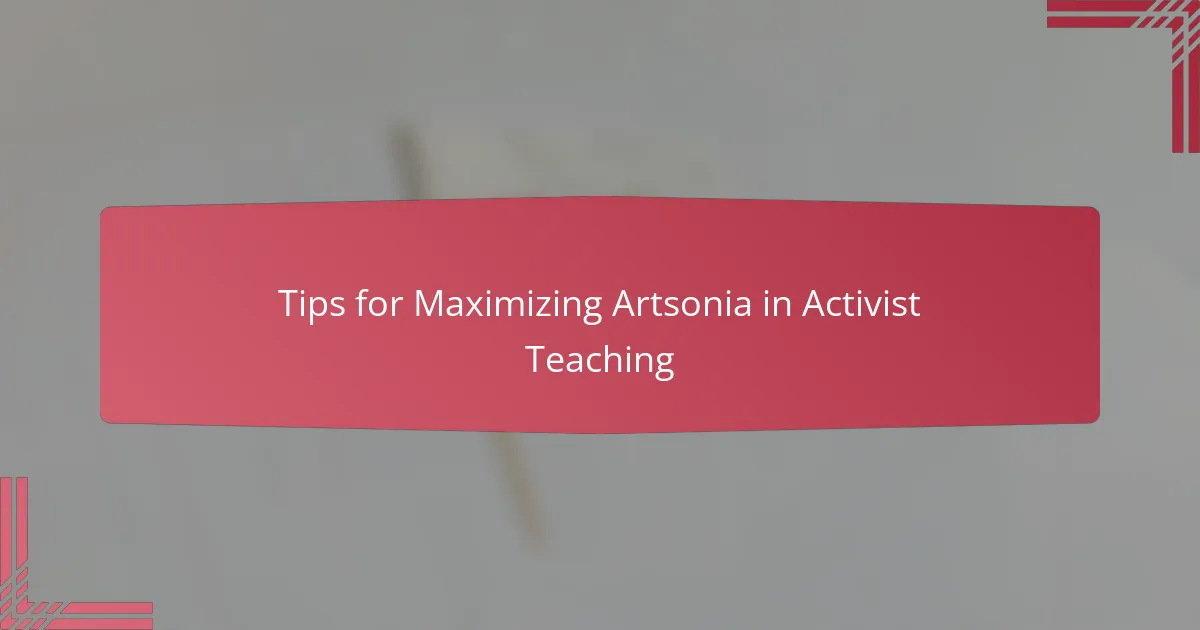
Tips for Maximizing Artsonia in Activist Teaching
One tip I’ve found invaluable is intentionally linking student artwork on Artsonia to current social issues we explore in class. Asking students to create pieces that reflect themes like justice or identity not only deepens their engagement but also makes the virtual gallery a space for activism. Have you tried prompting your students to use art as a voice for change? The impact can be truly powerful.
I also recommend encouraging students to write artist statements for their Artsonia portfolios. This practice invites them to articulate the message behind their work, fostering critical thinking and self-expression. From my experience, these reflections transform the gallery from just a collection of images into a dynamic conversation about values and activism.
Finally, don’t underestimate the power of sharing Artsonia galleries beyond just families. I’ve reached out to local organizations and community groups to showcase student work, which amplifies their voices and builds real-world connections. Isn’t it exciting to see young artists inspire action beyond the classroom walls? This broader exposure often motivates students like nothing else.